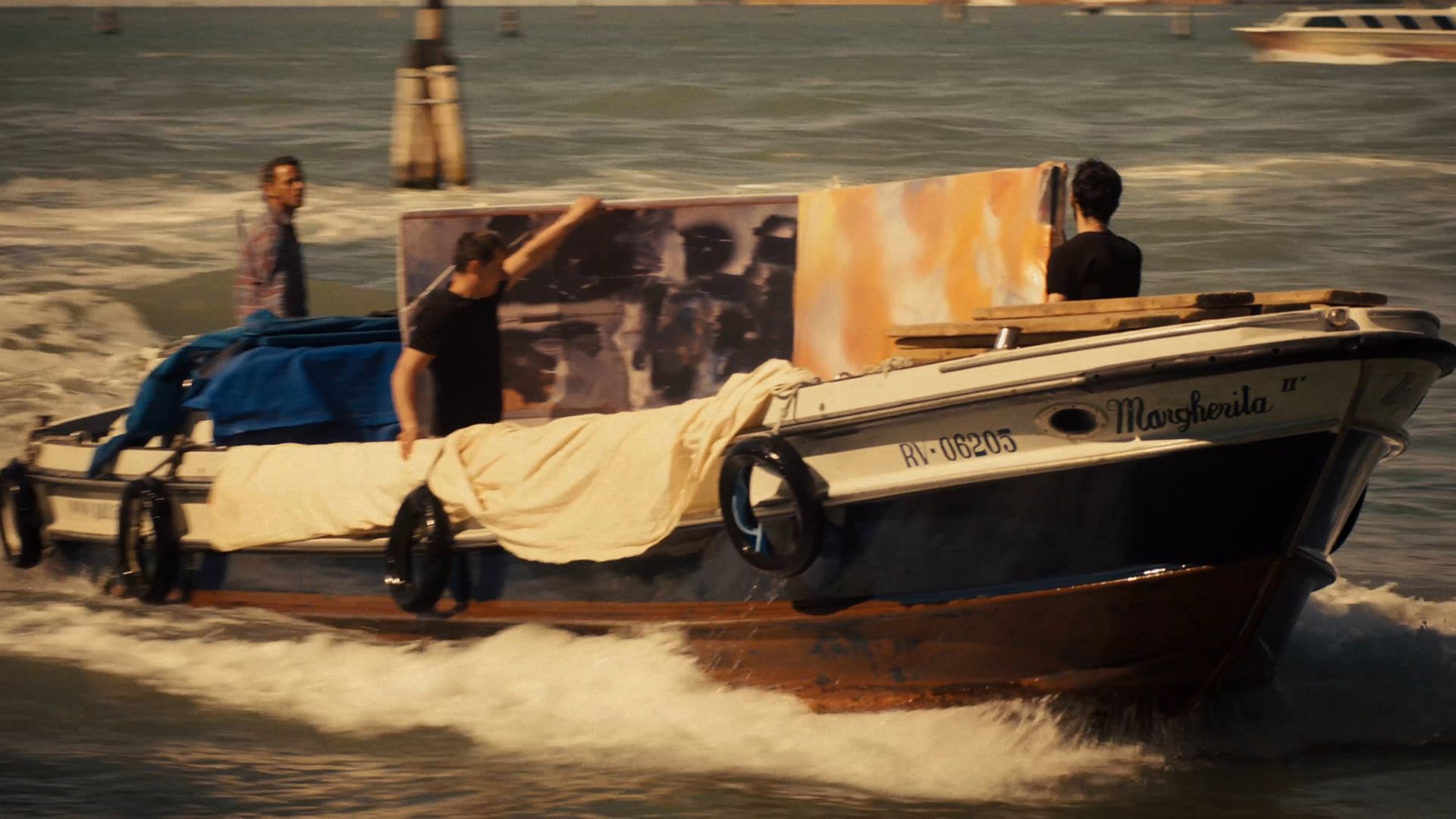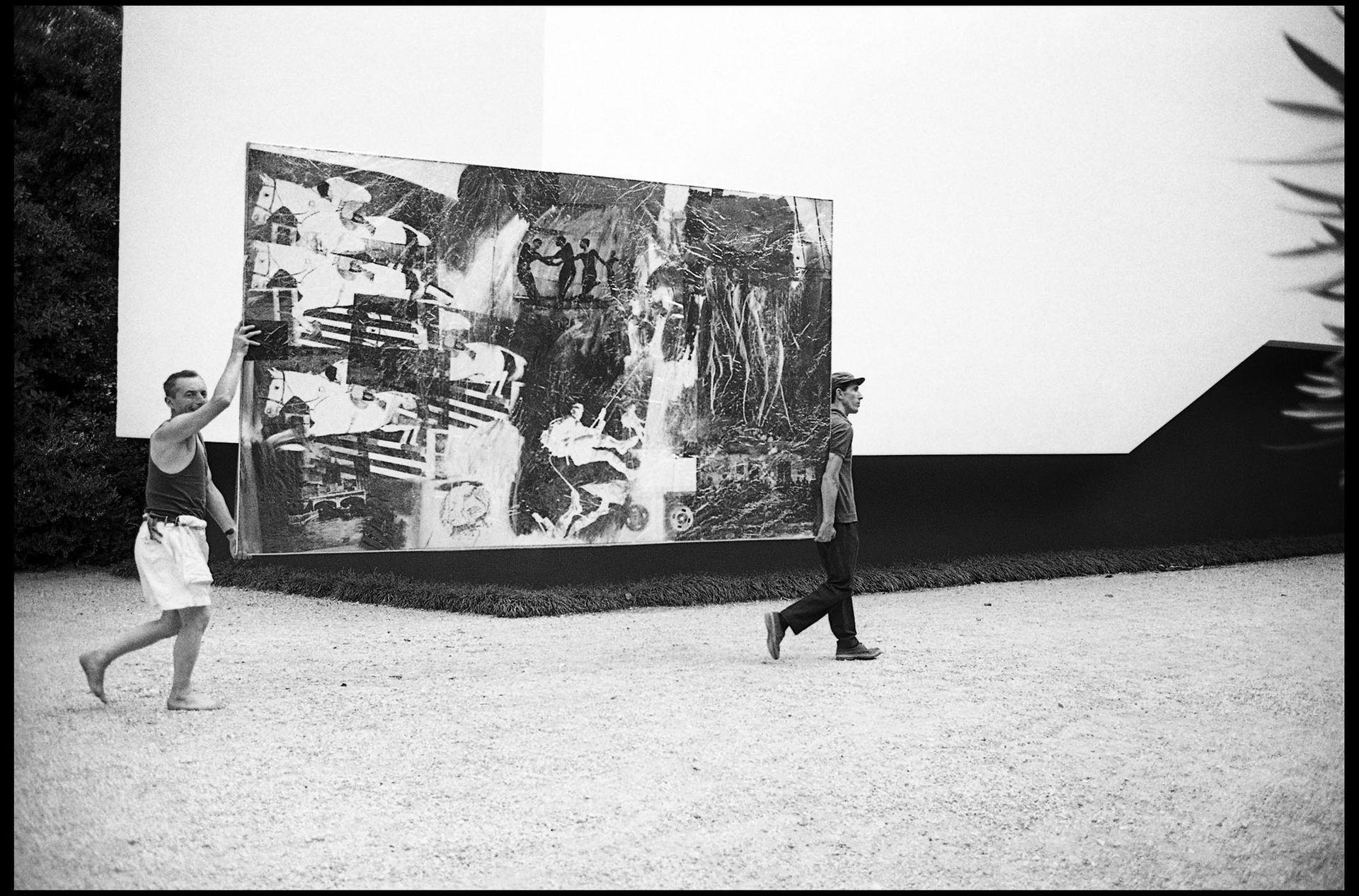In 1964, the American artist Robert Rauschenberg was awarded the grand prize at the Venice Biennale. Was that prize predetermined, thanks to the US military plane that brought his oversized art to Venice and to maneuverings by the dealer Leo Castelli and others to sway the jury?
A storm of accusations flared in the press in 1964, and the case lived on in academic studies of Cold War cultural diplomacy.
The new documentary Taking Venice, directed by Amei Wallach, revisits those events as if the story were a mystery. And it is today, because the art intrigue surrounding Rauschenberg’s prize has been largely forgotten and the US government had a more urgent plot to investigate at the time—the 22 November 1963 assassination of president John F. Kennedy.
Those who watch the film for evidence of a conspiracy get some skullduggery, but no smoking gun. What they do get are accounts of a madcap campaign, with nostalgic footage of Venice before today’s tourist gridlock, and a prequel to the cash-fueled politics behind major art events and major awards that are so common today.
In 1964, Rauschenberg was to show at the US Pavilion in Venice with a group of American artists—Claes Oldenburg, Frank Stella, Jim Dine and John Chamberlain. The all-male showcase was typical of the time, although the powerful dealer Ileana Sonnabend (Castelli’s ex-wife) aided the team.

Recreation of the 1964 transport of Robert Rauschenberg’s work in Venice canals for exhibition at the Venice Biennale. Still from Taking Venice. Courtesy Zeitgeist Films
Still an outsider in 1964, in the suave Castelli’s stable, Rauschenberg, raised an evangelical Christian, was aglow after a one-man show at the Jewish Museum in New York. A new director at that institution, Alan Solomon, had steered a sleepy place into contemporary art. With the Washington insider Alice Denney of the US Information Agency (USIA), Solomon and Castelli would get Rauschenberg and his art to Venice and to fame.
Denney, who died last month in Washington at 101, had crucial DC connections, procuring a US Air Force plane to transport the artist’s signature assemblages, including Monogram (1955-59), a stuffed goat with a tire around its neck. Critics, aghast at the goat, said the works weren’t paintings or sculptures. Rauschenberg coined the term “combines” in response. The works flew to a North Atlantic Treaty Organization (Nato) base near Venice, but still couldn’t fit in the awkwardly proportioned US Pavilion. Solomon placed them in a vacant former US consulate next to the Peggy Guggenheim Foundation, breaking a rule that they had to show in the pavilion. At a party at the former consulate, a distiller donated enough whiskey to intoxicate any dissenters, the wise-cracking Denney recalls.
The same critics still booed a performance at Teatro La Fenice by the Merce Cunningham Dance Company, with a radiant stage décor by Rauschenberg. Jurors who attended were charmed. Rauschenberg finally got the prize.
Denney, venerable and wry, and Solomon are the surprises in Taking Venice. Denney, in her own way, was as adept an operator as Castelli. “People said, ‘Oh Alice is just seducing all the jurors.’ Believe me, that would have taken a lot of seducing,” she recalls. Solomon, working with her, exploited a chameleon-like skill at seeming Italian, without really knowing the language. He died at 49 in 1970, taking plenty of stories with him.
“We didn’t cheat. We had a goal, as all countries did,” Denney says.

Transporting Robert Rauschenberg’s Express at the 1964 Venice Biennale. Photo Ugo Mulas © Ugo Mulas Heirs. All rights reserved.
Yet their gambit produced a lasting rage, not just among some Italians, but particularly among French critics. In newspaper articles flashed on the screen—which the film could have lingered on longer—we read jeremiads of the ancient régime in decline. The affair’s J’accuse equivalent, “Betrayal in Venice” by the poet and journalist Alain Bosquet, ran in the leftist newspaper Combat.
“There are dark days in the history of human consciousness. There are shameful moments,” Bosquet wrote. “The consecration, if one can call it that, of the American painter Robert Rauschenberg at the Venice Biennale is a degrading event in the current disorder. One wonders if Western art can recover. One cannot underestimate the gravity of this insult to all that, in our time, represents harmony, serious inquiry and lasting value.”
Bosquet was hyperbolic, but he was on to something that wasn’t a secret. France had lost its place as a centre for art to New York and to Americans like the amiable Texan Rauschenberg. And behind Rauschenberg and a growing number of artists were dealers and armies of publicists elbowing to place their works in biennials and win them prizes. The conspiracy suggested in the film was just a fancy word for promotion. Castelli was a businessman. Who would have expected anything else from him?
- Taking Venice screened at the Doc NYC film festival last month and will be distributed widely by Zeitgeist Films in spring 2024.


